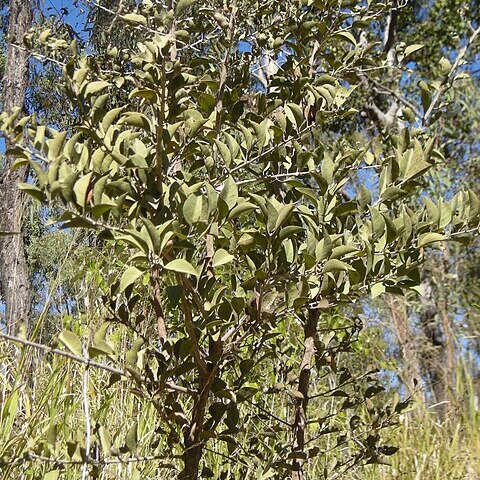A small tree. It grows up to 4 m high. It spreads 1-2.5 m wide. There are thorns on young plant parts. The leaves have short felty hairs. The leaves are alternate and oval and 10 cm long. The buds have four ridges. The fruit can be smooth or warty. They grow to the size of an orange. They are 2-7 cm across. The fruit and seeds are edible.


